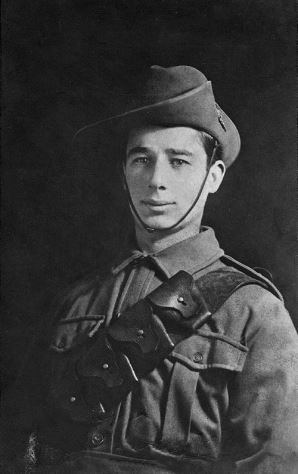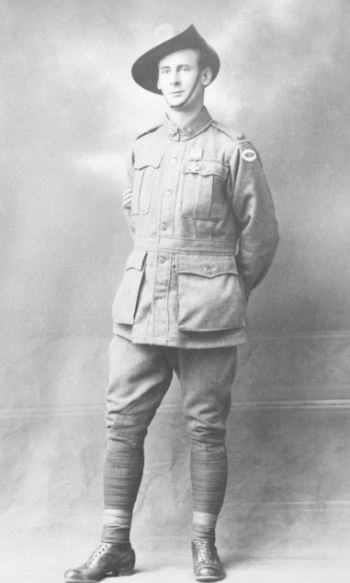Sergeant Samuel James Pearse VC, MM (1897 - 1919, 22yo)
 Samuel Pearse was born in Wales and migrated to Australia in 1911 on 16 July 1897. Before enlisting, he worked in various roles, including as a fruit picker, labourer, trapper, and paddle-steamer deck-hand. He joined the Australian Imperial Force on 10 September 1915.
Samuel Pearse was born in Wales and migrated to Australia in 1911 on 16 July 1897. Before enlisting, he worked in various roles, including as a fruit picker, labourer, trapper, and paddle-steamer deck-hand. He joined the Australian Imperial Force on 10 September 1915.
Pearse was posted to the 9th Reinforcements for the 7th Battalion and saw brief service at Gallipoli in December before deploying to France in March 1916. In August, he transferred to the 2nd Machine-Gun Company, which was later absorbed into the 1st Machine-Gun Battalion. He was wounded in action on 24 August 1916.
While on outpost duty near Glencorse Wood on the night of 18 September 1917, Pearse spotted enemy activity and crept forward alone to attack a German position with grenades, causing casualties and forcing a withdrawal. Though normally employed as a runner, he remained in the trenches from 16 to 22 September, bravely carrying messages, guiding troops, and evacuating the wounded under fire. His repeated acts of courage earned him the Military Medal.
Pearse was promoted to Lance Corporal in November 1917 and Corporal in April 1918. Wounded again in May 1918, he was evacuated to England and did not return to his unit before the war ended. He was discharged from the AIF on 18 July 1919 but soon joined the 45th Battalion, Royal Fusiliers, to serve with the North Russia Relief Force.
On 29 August 1919, north of Emtsa in North Russia, Pearse led a daring assault against a heavily defended enemy battery position. Under intense fire, he cut through barbed wire to open a path for his unit and then single-handedly stormed a blockhouse, killing the occupants with grenades. He was killed moments later. For his exceptional courage and self-sacrifice, he was posthumously awarded the Victoria Cross. Samuel Pearse was buried in North Russia.
Lance Corporal Walter Peeler VC, BEM (1887 - 1968, 80yo)

Walter Peeler was born at Barker's Creek, Victoria on 9 August 1887. Although there are no formal records of his education, it is known that he worked on his parents' orchard prior to enlisting in the Australian Imperial Force on 17 February 1916. He embarked for overseas service with the 3rd Pioneer Battalion in June that year.
Peeler was wounded in action during the Battle of Messines on 7 June 1917. Later that year, on 4 October, he was attached to the 37th Battalion for anti-aircraft duties during the assault on Broodseinde Ridge in Belgium. Taking part in the first wave of the attack, Peeler led a charge against three enemy sniper posts and a machine-gun position, ultimately accounting for thirty enemy soldiers. His exceptional bravery and leadership earned him the Victoria Cross. During the Second Battle of Passchendaele, he was wounded and sent to London, where he received his decoration from King George V at Buckingham Palace. Peeler rejoined his unit in May 1918 and was quickly promoted to Corporal and then Sergeant. He returned to Australia in October and was discharged in December 1918.
In World War II, Peeler understated his age by 14 years to enlist in the 2nd AIF. In 1940, he served in the Syrian campaign as the Company Quartermaster Sergeant of D Company, 2/2nd Pioneer Battalion. He later deployed to Java in 1942, where he was captured following the island's surrender and endured years as a prisoner of war on the Burma Railway. He was one of only three Victoria Cross recipients from World War I to serve overseas in World War II.
Peeler returned to Australia in October 1945 to the devastating news that his son had been killed on Bougainville in December 1944 while serving with the 15th Battalion. Survived by children from both of his marriages, he passed away on 23 May 1968 in South Caulfield and was buried in Brighton Cemetery. His medals are now displayed in the Hall of Valour at the Australian War Memorial.
Last Reviewed 06/2025









